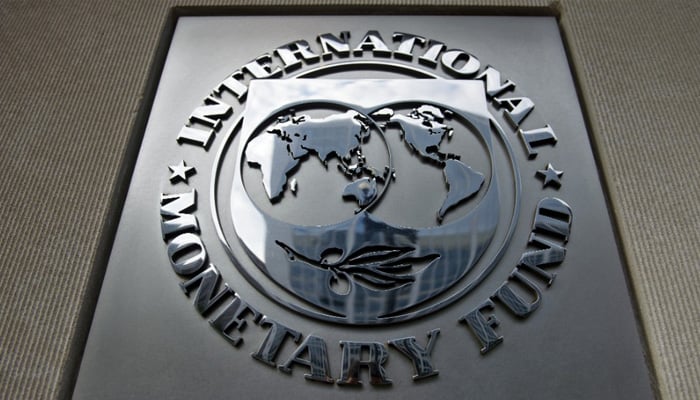IMF sees growth falling at 4pc in FY2019
The International Monetary Fund (IMF) sees growth to fall at four percent during the current fiscal year of 2018/19 as it says the economy is losing grip on the gains made during the previous years.
KARACHI: The International Monetary Fund (IMF) sees growth to fall at four percent during the current fiscal year of 2018/19 as it says the economy is losing grip on the gains made during the previous years.
“Growth in Pakistan is expected to strengthen from 5.4 percent in 2017 to 5.8 percent in 2018… underpinned by improved energy supply, investment related to the China-Pakistan Economic Corridor, and strong credit growth,” the IMF said on Tuesday in the ‘World Economic Outlook (WEO) October 2018: Challenges to steady growth’ report.
“However, macroeconomic stability gains have been eroding, putting the outlook at risk. Growth is expected to moderate to 4.0 percent in 2019, and slow to about 3.0 percent in the medium term – till 2023.”
The last fiscal year’s growth was 0.2 percentage point higher than what was forecast by the IMF in its April 2018 WEO.
The biannual publication coincided with the deteriorating economic situation that is compelling the new government to move back to reforms-attached loan program of Bretton Woods financial institution to plug holes in the widening current account balance. The current account deficit widened 10 percent year-on-year to $2.7 billion in the July-August period of FY2019, mainly due to swelling trade deficit.
Pakistan completed the three-year IMF’s extended fund facility program of $6.7 billion in September 2016.
The country recorded an average 4.7 percent growth between 2000 and 2009. Real GDP growth was recorded at 2.6 percent in 2010, 3.6 percent in 2011, 3.8 percent in 2012, 3.7 percent in 2013, 4.1 percent each in 2014 and 2015, 4.6 percent in 2016 and 5.4 percent in 2017.
IMF said current account deficit would continue to rise to 5.9 percent of GDP during the current year as against 4.1 percent during the last year, but it is likely to come down to 5.3 percent in the next years.
The central bank has raised the key policy rate by cumulative 275 basis points to 8.5 percent since January to contain demand pressure and tame inflation. Annual consumer inflation rose to 5.1 percent in September compared to 3.86 percent in the same month a year earlier.
The Washington-based lender projected inflation to sharply rise at 10.2 percent in 2019, but it is expected to slow down at six percent till 2023.
The country witnessed the steepest level of inflation in 2011 (9.3pc), 2012 (9.8pc) and 2013 (9.2pc), according to the data in the biannual publication. The fund expected inflation at 10.8 percent in 2018. Additionally, consumer prices are expected to climb at 7.5 percent in 2019 after moderating to 3.9 percent this year compared to 4.1 percent in 2017.
Slow growth continues to take toll on jobs market. IMF projected unemployment rate at 6.1 percent each in 2018 and 2019 much like the current year, but a percentage point up compared to six percent recorded in 2017.
-
 Friends Warn Meghan Markle About Prince Harry As Duke Plans Olive Branch To King Charles
Friends Warn Meghan Markle About Prince Harry As Duke Plans Olive Branch To King Charles -
 Sarah Ferguson Slammed As Her Exit Strategy Falls Apart
Sarah Ferguson Slammed As Her Exit Strategy Falls Apart -
 Australia On Alert: State Of Disaster Declared As Victoria’s Bushfires Rage
Australia On Alert: State Of Disaster Declared As Victoria’s Bushfires Rage -
 Bucks Vs Lakers: Giannis, Dončić Headline Tight Contest In Los Angeles
Bucks Vs Lakers: Giannis, Dončić Headline Tight Contest In Los Angeles -
 David, Victoria Beckham Want To Mend Ties With Brooklyn, Nicola Peltz: Source
David, Victoria Beckham Want To Mend Ties With Brooklyn, Nicola Peltz: Source -
 Germany Plans Fast-track Measures To Combat AI-driven Image Manipulation
Germany Plans Fast-track Measures To Combat AI-driven Image Manipulation -
 Daniel Stern, 'Home Alone' Star, Cited By Police In Alleged Prostitution Sting
Daniel Stern, 'Home Alone' Star, Cited By Police In Alleged Prostitution Sting -
 US Arctic Strategy: Trump Threatens To Take Greenland ‘the Hard Way’
US Arctic Strategy: Trump Threatens To Take Greenland ‘the Hard Way’ -
 Kate Middleton's Smart Beauty Choices At 44 Revealed
Kate Middleton's Smart Beauty Choices At 44 Revealed -
 Environment Canada Weather Warning As Cold Front Brings Strong Winds To Ottawa
Environment Canada Weather Warning As Cold Front Brings Strong Winds To Ottawa -
 Timothy Busfield Faces Sexual Assault And Child Abuse Charges In New Mexico
Timothy Busfield Faces Sexual Assault And Child Abuse Charges In New Mexico -
 WHL Update: Peter Anholt Removed Over Conduct Breach As Hurricanes Restructure
WHL Update: Peter Anholt Removed Over Conduct Breach As Hurricanes Restructure -
 Why Gisele Bündchen's Family 'not Happy' With Her Wedding To Joaquim Valent?
Why Gisele Bündchen's Family 'not Happy' With Her Wedding To Joaquim Valent? -
 Winnipeg Jets Finally Break Through, Defeat Los Angeles Kings To Halt 11-game Slide
Winnipeg Jets Finally Break Through, Defeat Los Angeles Kings To Halt 11-game Slide -
 Brooklyn Beckham Celebrates Wife Nicola Peltz's Birthday Amid Family Tensions
Brooklyn Beckham Celebrates Wife Nicola Peltz's Birthday Amid Family Tensions -
 NASA, SpaceX Announce Target Date For Crew-11’s Splashdown Return To Earth
NASA, SpaceX Announce Target Date For Crew-11’s Splashdown Return To Earth




